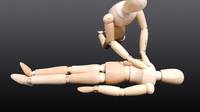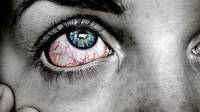
Health Appraisal
This refers to a series of procedures to assess or determine the health status of the students through the use of teacher's observations, screening tests, health histories or inventories, medical and dental inspections and psychological tests. They are dependent upon the cooperative effort of parents, teachers, physicians, dentists, health educators, nurses and others in the school program.
School Health Personnel
1. School Physician - takes charge of the medical examinations of students, teachers and other school personnel.
2. School Nurse - assists the physician in determining the health status of the students and other school personnel. She is also expected to plan, organize and administer or manage the school health service center or the school clinic.
3. School Dentist - takes charge of the dental examinations of students, teachers and other school personnel.
4. Other school Health Personnel such as the principal and teachers.
Duties of the School Health Personnel
1. Health Appraisal - refers to that phase of school health service which seeks to assure the physical, mental, emotional and social health status of the students through such means as health histories, teacher and nurse's observations, screening tests, medical, dental and psychological examinations.
2. Health Counselling - the procedure by which nurses, teachers, physicians, guidance personnel and others explain to students and parents the nature and significance of health problems and aid in formulating a plan of action to solve the problem.
3. Health Examination - an examination performed by the school physician to check the health status of the students. The eyes, ears, nose, throat, posture, nutritional status, heart, lungs, genital organs and glands are examined which usually requires five minutes or longer for each student.
4. Follow-up - the result of the health examination should be discussed with the teacher concerned as soon as possible. Findings of the examination may be given to the students. Home visits should be made to follow-up cases of the students.
5. Emergency Care Program - instructions are given on first aid and safety education among the students to develop safety attitudes.
6. Control of Communicable Diseases - responsibility of the school to protect the students and their families against communicable diseases.
Components of Health Appraisal
Each day during the school year, the health of the students is appraised in one way or another. Such appraisal may be informal or the result of a careful medical or dental examination, a psychological or a screening test for vision or hearing.
1. Teacher Observation
It is a fact that a student spends more of his waking hours with the classroom teacher than with any other adults except his parents. Thus, the teacher occupies a unique position in relation to the learner's physical and emotional health as well as his academic accomplishments. Because of his familiarity with the usual appearance and behavior of each student, the teacher is in a strategic position to detect changes that may indicate deviations from the normal.
Based upon his observations, the teacher fills up the Teacher Observation Record which has the following purposes:
1. To guide the teacher in determining if a student needs medical attention.
2. To provide specific information to the teacher-nurse, teacher-dentist or teacher-physician based on conferences attended.
3. To aid the teacher through observation in understanding the relationship between behavior and health.
2. Screening Test
Screening tests, as a part of health appraisal, are preliminary evaluations of the state of development and function of the various body organs. This is performed by teachers, nurses or technicians who screen out students needing further examinations and diagnosis by specialized health service personnel.
a. Vision Test - Snellen Chart
This is done with the use of Snellen Chart, This is very important becasue vision is a priceless heritage and professionall, the school accepts the responsibility of doing everything to conserve and protect this heritage for everybody in the school. Through vision testing, we can detect students with vision problems.
Procedures in Vision Testing:
1. Stand of sit when tested. If standing, the heels should touch the 20-foot line; If seated, the back legs of the chair should touch the line.
2. Interpret the symbols with the use of the hand. Identify objects when object charts are used or read the letters when a letter chart is used.
3. If wearing an eyeglass, test with the eyeglass on and record the result. However, if under the supervision of an ophthalmologist, an annual screening need to be done.
4. Both eyes should be opened during the test. The other eye should be covered with a cardboard resting obliquely across the nose. Avoid pressures on the eyeball.
5. Begin with the 30-foot line. If unsuccessful, follow-up with the 20-foot line.
6. Move promptly and rhythmically from one symbol to another at a speed with which you can keep pace.
7. Consider seeing a line satisfactory if three out of four symbols are read.
8. Record results immediately in fraction forms, the numerator (constant) representing distance from the chart which is 20 feet, and the denominator representing the lowest line read accurately.
b. Hearing Test
This will identify your hearing ability. Ideally, you should be given a hearing test early in each school year.
A whisper test is not the most accurate but in the absence of an audiometer, this may be of some value. Its usefulness is determined largely by the skill of the person who administers the test.
A room for the test should be reasonably quiet and only the tester and the patient should be in the room.
c. Height and Weight Measurement
Checking the student's physical growth by weighing and measuring or by either recording or plotting to obtain weights and heights in a classical screening procedure. Students are very much interested in their growth and development and the changes formed when height and weight are measured periodically. These will serve as a basis for instructions relating to the factors that influence growth and maturity and furnish motivation for health practices improvement.
Procedure in Weight-Taking:
1. Form a single line and remove extra clothing (e.g sweater) and shoes.
2. Stand in the middle of the platforms of the beam balance with hands at the sides.
3. Get the correct balance, read the weight carefully to the tenth of a kilo or to the nearest quarter of a pound.
Procedure in Measuring Height:
1. Remove your shoes and stand as tall as possible with the lower back shoulders, near of the head and heels (nearly together but not touching each other in contact with the wallboard).
2. Have the arms hanging at the sides in a natural manner and the head facing straight forward.
3. Bring the triangle or chalkbox against the tape measure or scale on the wall and lower down until it rests upon the head.
4. Record the height to the nearest one fourth.
3. Dental Examination
This is done by the school dentist who will give information on proper caring and importance of the teeth.
4. Medical Examination
This is the final step in health appraisal with a physical examination and evaluation made by a physician. Ideally, while under observation, a summary of the teacher's or nurses observations should be available. The results of such examinations should be relayed to the parent and preventive measures and necessary treatments should be explained.


















